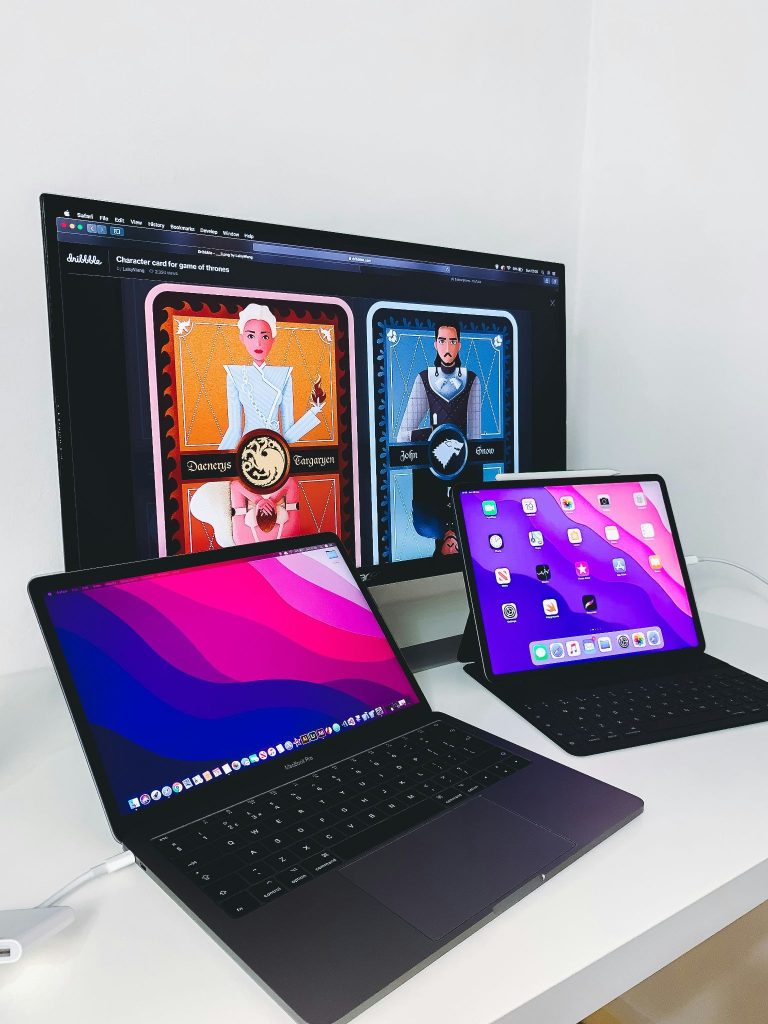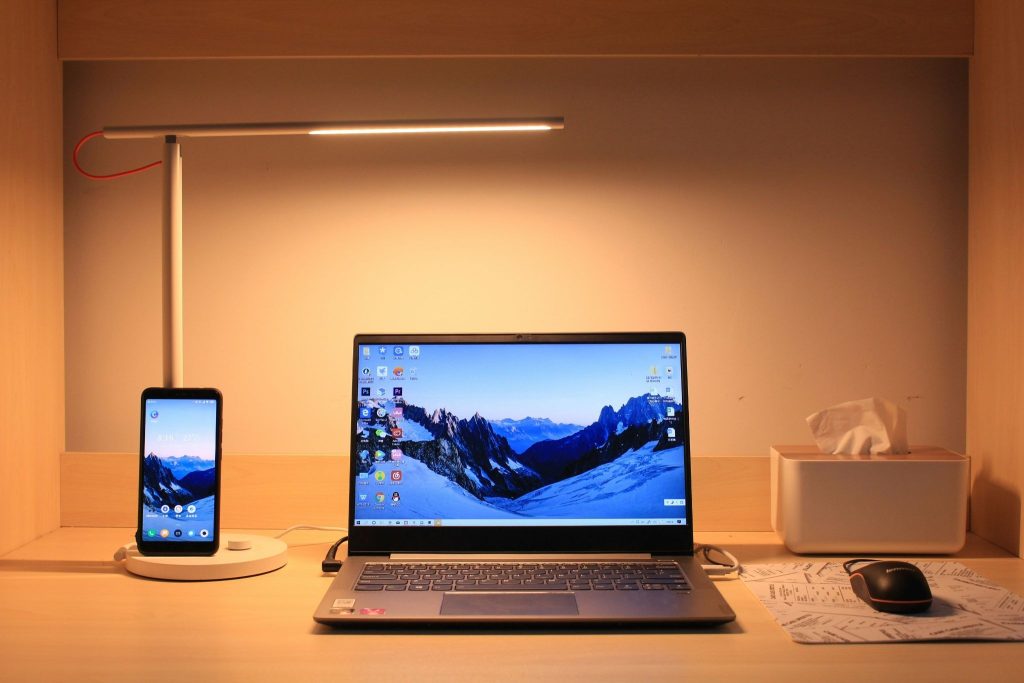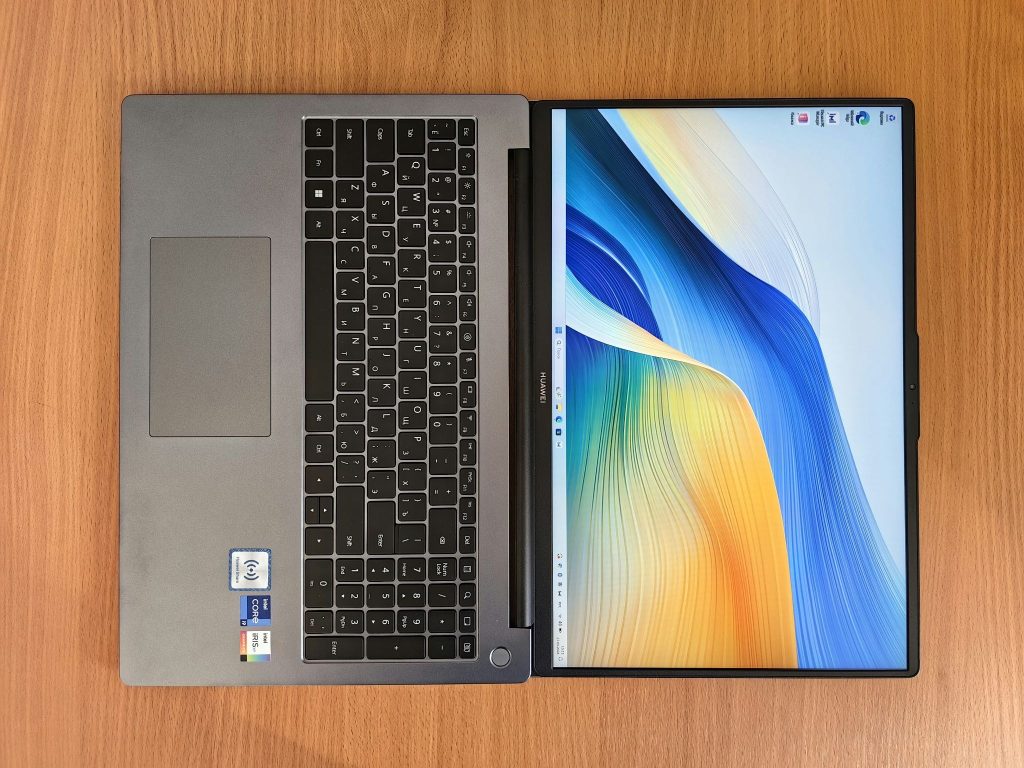
Choosing the right laptop in 2025 gets harder every year, because the hardware is getting better all around. But there are still big differences. This article helps you compare by features, trade-offs, and gives examples of standout models.
Key Comparison Criteria
When comparing laptops, these are the features that make the most difference in real-world use. Whichever model you pick, decide your priorities among these:
| Feature | Why It Matters | What to Aim For in 2025 |
| Processor (CPU / SoC) | Determines how fast your laptop can handle multitasking, content editing, compiling, etc. Modern chips also include neural / AI accelerators. | Ultra-modern chips like Apple’s M-series (M4, M3), Intel’s Ultra lineup, AMD Ryzen AI, or efficient ARM/Qualcomm chips. At least 6–8 high performance cores (or equivalent), efficiency cores for light tasks. |
| Graphics / GPU | For anything beyond basic office productivity: video editing, gaming, 3D work — discrete or strong integrated graphics help a lot. | RTX-class or latest integrated GPUs; for creators/gamers, at least an RTX 4060/4070 or strong AMD GPU; for light users, integrated graphics that support hardware acceleration. |
| Memory (RAM) | If RAM is too small or not upgradeable, performance will degrade under heavy multitasking or future software. | 16 GB minimum for general use; 32 GB or more for creators / heavy multitasking / future-proofing. |
| Storage | Speed of storage matters for load times, large files, video editing. Capacity matters for how many files you can keep locally. | NVMe SSDs (fast read/write), 512 GB baseline; 1 TB or more if working with large files; upgrade-ability is a plus. |
| Display | The panel affects your experience: clarity, color fidelity, refresh rate, resolution. | OLED / Mini-LED or high quality IPS, good resolution (2K / 3K / 4K), high refresh rate (120Hz or higher helpful for smooth UI or motion), wide color gamut if you do photo/video. |
| Battery Life & Efficiency | Even powerful laptops are useless if you can’t use them unplugged for a while—travel, meetings, classes demand this. | 10-20+ hours for ultrabooks; power efficiency in chips; also weight and how much performance drops under battery power. |
| Build Quality, Portability & Thermals | A beautiful laptop is less useful if it throttles under load or feels heavy to carry. | Metal chassis or strong materials, good cooling, lightweight design if you travel; good keyboard, ports, webcam, etc. |
| Features & Extras | Security, ports, webcam quality, service/warranty can materially affect experience. | Thunderbolt / USB4, WiFi 6/7, good webcam/mics, privacy shutters, upgrade options, good warranty / support. |
Side-By-Side: Top 2025 Laptop Models

Below are example laptops representing different use cases. For each, I compare what they do especially well, and where they fall short.
Deep Dives: Where Models Differ Most

Let’s focus on a few aspects where laptops tend to diverge significantly — these are the ones that matter when you compare two laptops with similar specs.
CPU / Chip Performance & Efficiency
- Apple’s M-series (M3, M4) are consistently praised for high performance and efficiency. They deliver strong single-core and multi-core speeds with less power draw.
- Intel Ultra / AMD Ryzen AI / newer chips are closing the gap; they offer more cores, better graphics, AI accelerators, etc. The trade-off is often power consumption and heat (especially in thinner chassis).
- ARM/Qualcomm-based chips (e.g. Snapdragon X Elite) offer promising battery life & efficiency, but compatibility with certain applications/software can be a concern.
Display & Visual Experience
- OLED / Mini-LED panels are increasingly common and offer better contrast, color, and sometimes refresh rate. Great for creatives and media consumption. But they tend to cost more.
- Panel resolution / color gamut matter: for creative work (video, photo), you’ll want accurate DCI-P3 or AdobeRGB coverage, wide color gamut, good calibration.
- Smaller, lighter ultrabooks often use good displays, but larger laptops give more screen space, helpful for multitasking, editing, etc.
Battery Life & Portability
- Ultrabooks and Apple’s MacBooks tend to win in battery life under light or mixed usage. For example, MacBook Air (M4) has high estimates of battery runtime in tests.
- Big, powerful laptops (with discrete GPUs or high refresh OLEDs) often see battery life drop sharply under load. If you plan to use a laptop unplugged often, check real-world battery test figures, not just manufacturer specs.
Build, Thermals, and Noise
- Strong cooling systems matter for performance under continuous load. Laptops with weak cooling will throttle, reducing performance.
- Noise: powerful machines tend to have louder fans when pushed; ultrabooks may compromise performance for quietness.
- Build materials: aluminum or magnesium chassis tend to last longer and feel more premium; plastic or mixed materials may feel cheaper.
Upgradability & Longevity
- RAM and storage being upgradeable is a huge plus — it adds future resilience. Many laptops now have soldered RAM, which means choosing a high RAM spec initially is important.
- Warranty, service support, and spare part availability are often overlooked but critical in long-term ownership. Brands like Apple, Lenovo (ThinkPads), Dell (XPS/Latitude), HP (EliteBooks) tend to have better enterprise/business support.
- Software updates matter: OS security patches, driver updates, etc. A laptop that’s left behind in firmware or driver support can get slow or problematic.
Case Study Comparison
To illustrate, here’s a comparison of three laptop scenarios, with hypothetical users, to show how different models might be better suited depending on use:
| Use Case | What’s Most Important | Best Fit Models & Why |
| Freelance Creator / Video Editor (4K editing, frequent travel) | High GPU performance, excellent display color accuracy, good thermal design, decent battery for travel, lightweight enough but power enough. | A laptop like MacBook Pro M4 (16-inch) or a creator version of ASUS ProArt / Dell XPS-15 Premium. These models give you strong chip + GPU, high color panels, good storage, and build quality. |
| Business / Remote Worker (office apps, video calls, travel) | Long battery life, reliability, good webcam, portability, durable build, comfortable keyboard, enough RAM. | Ultrabooks like MacBook Air M4, Dell XPS 13, Lenovo ThinkPad X1 Carbon. These prioritize efficiency, build, and features over raw graphics power. |
| Student / General Use (documents, web, streaming, occasional light content work) | Low to mid budget, sufficient memory, decent storage, comfortable keyboard, good display, reasonable battery. | Mid-range models: HP Pavilion / ThinkBook / Aspire / maybe Spectre lower-tier / lighter ASUS Zenbook. Get 16GB RAM, SSD, something like 512 GB so you’re not constrained. |
Recent Examples & New Model
Here are some recent laptop releases that are shaping the comparison charts:
- Dell 16 Premium (2025): A powerful ultraportable with options like 4K OLED, strong CPU+GPU combinations. However battery life lags and the price is premium.
- Apple 14-inch MacBook Pro (new M5 version): Upgraded performance, more memory bandwidth; still strong on battery, display, performance.
- HP EliteBook X G1a 14 AI: A laptop focused on AI workloads, with strong CPU cores, a built-in NPU, solid display and battery, good for professionals who need AI functionality.
What to Choose Depending on Your Priorities
Here are some decision guides depending on what you value most:
- If battery life + portability are top priorities: Go for ultrabooks with efficient chips (like Apple M-series, Snapdragon / ARM laptops, latest Intel/AMD efficiency cores). Choose lighter, smaller models with fewer power-hungry features.
- If performance (GPU / heavy tasks) matter: Look for laptops with discrete GPUs, good cooling, high-end CPU cores. Expect heavier weight, higher power draw, less battery when doing heavy work.
- If display quality matters (for creators or media consumption): Prioritize OLED / Mini-LED / high refresh rate, wide color gamut, high resolution. Be ready to pay extra.
- If long use life & reliability matter: Look at build materials, brand reputation, after-sales service, upgradeability, warranty, and support. Also consider models with better cooling, quieter fans (for comfort), and less bloatware.
Final Thoughts & Recommendations
When comparing laptops, there’s rarely a one-size-fits-all answer. The best laptop for someone focussed on video editing won’t be the same as for someone who mostly uses office apps and travels. The “sweet spot” usually lies in balancing:
- Power vs Portability
- Display quality vs Cost
- Battery life vs Features
- Upfront price vs long-term value
If I were to pick general “top recommendations” as of 2025 for different user types:
- For creators / power users: MacBook Pro M4 (16-inch) or ASUS ProArt P16 / similar creator-focused models.
- For business / frequent travel: MacBook Air M4, Dell XPS 13 or ThinkPad X1 Carbon.
- For budget / students: Mid-range ThinkBook, Pavilion or Zenbook lines with 16 GB RAM, good SSD, decent display.


